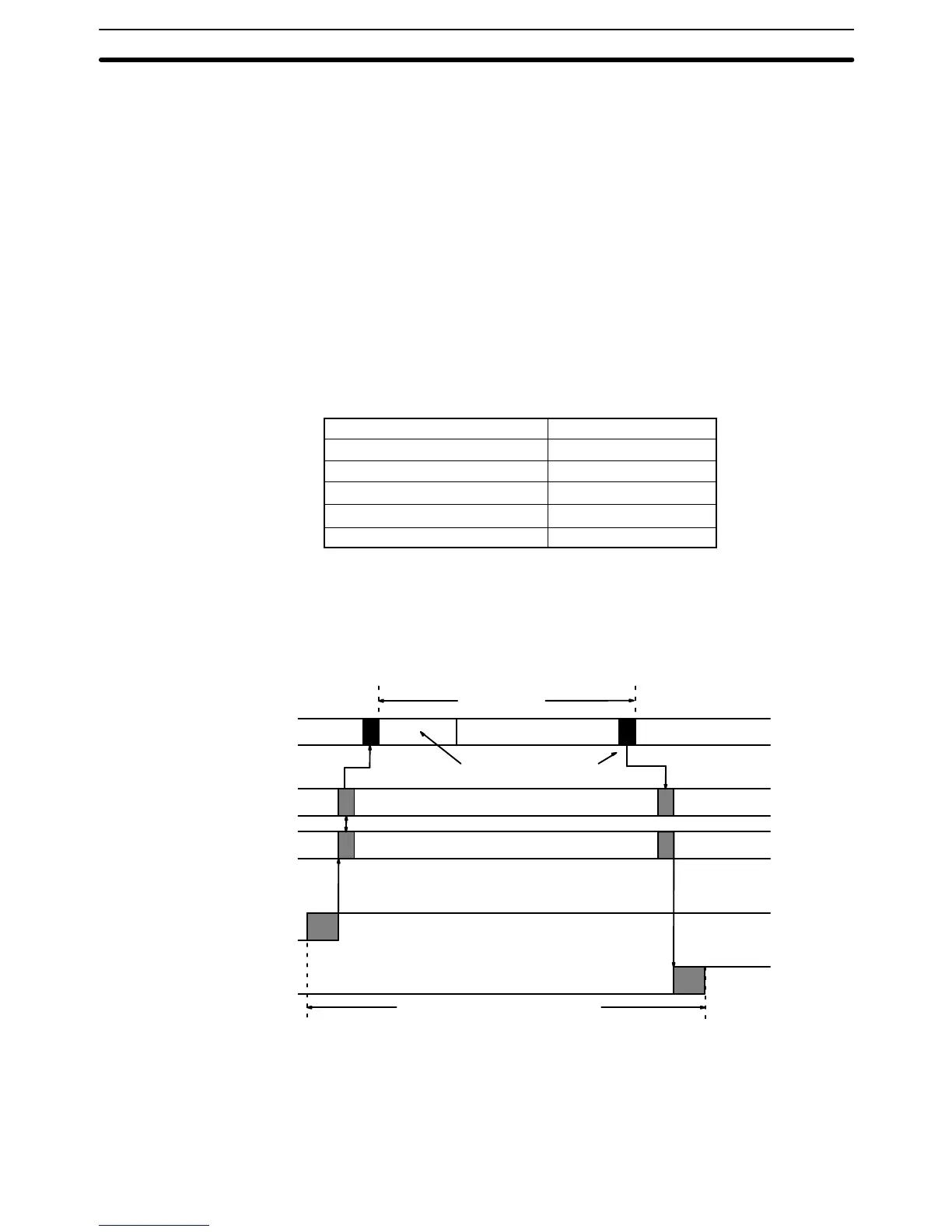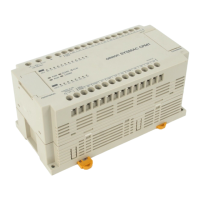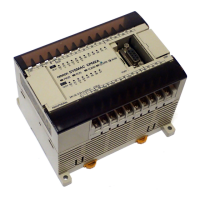489
Maximum I/O response time = 1.5 + (20 + 10) + (8.2 × 2) + 2.2 + 15 = 65.1 ms
6-5-3 Synchronous Operation with a SYSMAC BUS System
Here, we’ll compute the minimum and maximum I/O response times for a
CV1000 that is set for synchronous operation and controls a SYSMAC BUS Sys-
tem. Both the input and output are on I/O Units connected to Slave Racks. In
synchronous operation, SYSMAC BUS refreshing is carried out just after I/O re-
freshing as one phase of a single PC cycle.
The transmission time for a Master is the sum total of the transmission times for
all Slaves connected to it. The transmission time for Slave Racks is 1.4 + (0.2×
a
)
ms, where
a
is the number of I/O words on the Slave. The transmission time for
I/O Terminals is 2×
b
ms, where
b
is the number of I/O words on the I/O Terminals.
The data in the following table is used to produce the minimum and maximum
cycle times shown calculated below.
Input ON delay 1.5 ms
Cycle time 20 ms
Output ON delay 15 ms
Slave Rack transmission time
1.4 + (0.2×4) = 2.2 ms
I/O Terminal transmission time
2×3 = 6 ms
Master transmission time (T
RM
) 2.2 ms + 6 ms = 8.2 ms
The PC responds most quickly when the Master receives the input signal just
prior to I/O refreshing. This situation is illustrated below.
Input signal
Output signal
Cycle
Cycle time
I/O refresh
I/O response time
Output ON delay
Input ON delay
Program execution
Buffer in Master
Transmission time
Peripheral servicing
Minimum I/O response time = input ON delay + cycle time
+ Slave transmission time x 2 + output ON delay
Minimum I/O response time = 1.5 + 20 + 2.2×2 +15 = 40.9 ms
Minimum I/O Response
Time
I/O Response Time Section 6-5

